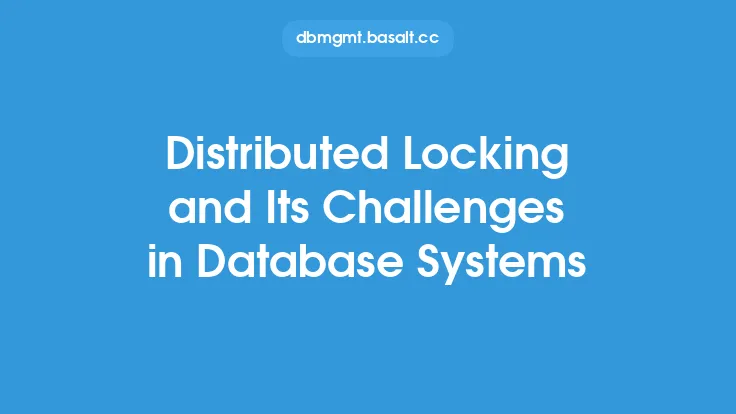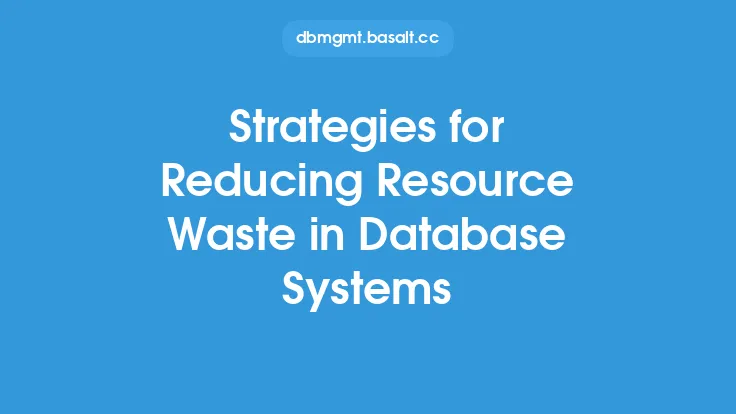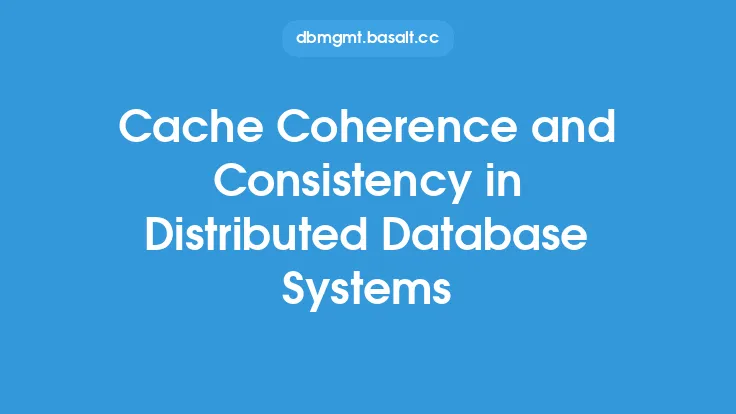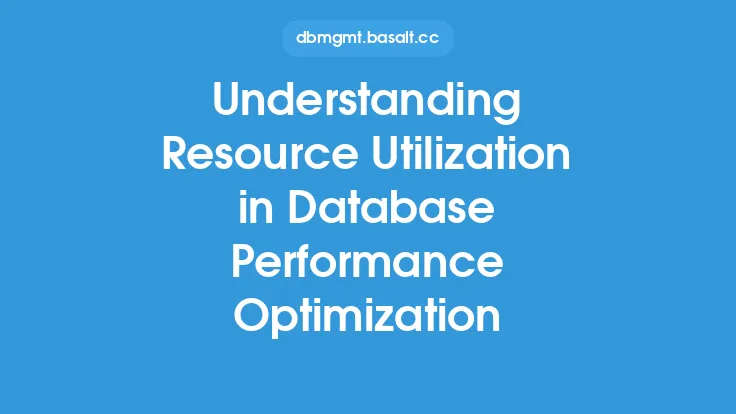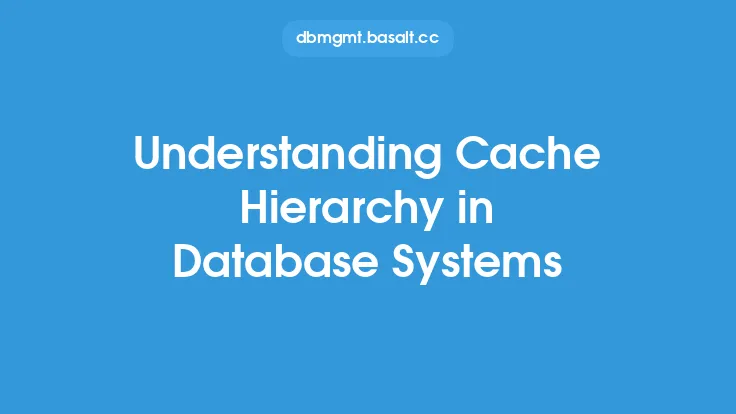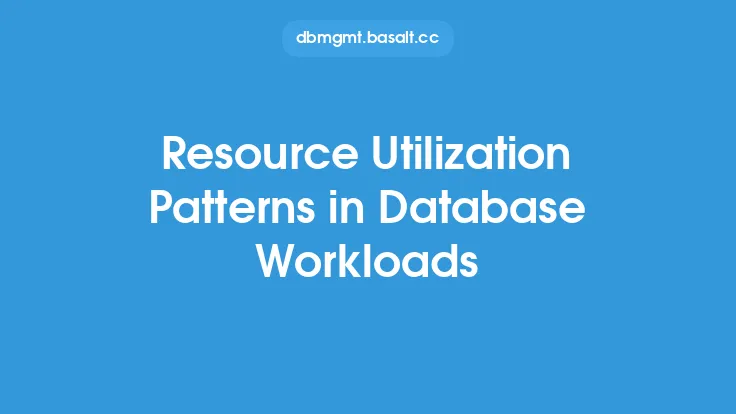Database systems are complex entities that rely on a multitude of resources to operate efficiently. These resources include CPU, memory, disk space, and network bandwidth, among others. When any of these resources become scarce, it can lead to a bottleneck, which is a condition where the overall performance of the database system is limited by a single resource. Identifying and resolving resource bottlenecks is crucial for maintaining optimal database performance and ensuring that the system can handle the required workload.
Introduction to Resource Bottlenecks
A resource bottleneck occurs when the demand for a particular resource exceeds its available supply. This can happen due to various reasons such as increased workload, inefficient resource allocation, or hardware limitations. When a bottleneck occurs, it can lead to a significant decrease in database performance, resulting in slower query execution times, increased latency, and even errors. Common symptoms of a resource bottleneck include high CPU utilization, memory shortages, disk space depletion, and network congestion.
Identifying Resource Bottlenecks
Identifying resource bottlenecks requires a thorough analysis of the database system's performance metrics. This can be done using various tools and techniques, including performance monitoring software, system logs, and query analysis. Some common metrics to monitor include:
- CPU utilization: High CPU utilization can indicate a bottleneck in CPU resources.
- Memory usage: Low available memory can indicate a bottleneck in memory resources.
- Disk space usage: Low available disk space can indicate a bottleneck in disk resources.
- Network bandwidth usage: High network bandwidth usage can indicate a bottleneck in network resources.
- Query execution times: Slow query execution times can indicate a bottleneck in CPU, memory, or disk resources.
- Wait events: Analyzing wait events can help identify the specific resource that is causing the bottleneck.
Types of Resource Bottlenecks
There are several types of resource bottlenecks that can occur in database systems, including:
- CPU bottlenecks: Occur when the CPU is unable to handle the required workload, resulting in high CPU utilization and slow query execution times.
- Memory bottlenecks: Occur when the available memory is insufficient to handle the required workload, resulting in memory shortages and slow query execution times.
- Disk bottlenecks: Occur when the disk subsystem is unable to handle the required workload, resulting in slow disk I/O and slow query execution times.
- Network bottlenecks: Occur when the network bandwidth is insufficient to handle the required workload, resulting in network congestion and slow query execution times.
Resolving Resource Bottlenecks
Resolving resource bottlenecks requires a thorough analysis of the underlying cause of the bottleneck. Some common strategies for resolving resource bottlenecks include:
- Upgrading hardware: Adding more CPU, memory, or disk resources can help resolve bottlenecks in these areas.
- Optimizing queries: Optimizing queries to reduce their resource requirements can help resolve bottlenecks in CPU, memory, and disk resources.
- Indexing: Creating indexes on frequently accessed columns can help reduce the disk I/O required for queries.
- Caching: Implementing caching mechanisms can help reduce the load on the disk subsystem and improve query execution times.
- Load balancing: Distributing the workload across multiple servers can help resolve bottlenecks in CPU, memory, and network resources.
- Resource allocation: Adjusting resource allocation settings can help ensure that each resource is allocated appropriately to meet the required workload.
Best Practices for Preventing Resource Bottlenecks
Preventing resource bottlenecks requires a proactive approach to database performance management. Some best practices for preventing resource bottlenecks include:
- Monitoring performance metrics: Regularly monitoring performance metrics can help identify potential bottlenecks before they occur.
- Analyzing workload trends: Analyzing workload trends can help identify areas where resource bottlenecks are likely to occur.
- Implementing resource allocation policies: Implementing resource allocation policies can help ensure that each resource is allocated appropriately to meet the required workload.
- Optimizing database configuration: Optimizing database configuration settings can help improve database performance and reduce the likelihood of resource bottlenecks.
- Regular maintenance: Regular maintenance tasks such as backups, indexing, and statistics gathering can help improve database performance and reduce the likelihood of resource bottlenecks.
Conclusion
Resource bottlenecks are a common issue in database systems that can significantly impact performance and availability. Identifying and resolving resource bottlenecks requires a thorough analysis of performance metrics and a proactive approach to database performance management. By understanding the types of resource bottlenecks that can occur and implementing strategies for resolving and preventing them, database administrators can help ensure optimal database performance and availability. Regular monitoring, analysis, and optimization of database performance are essential for preventing resource bottlenecks and ensuring that the database system can handle the required workload.
